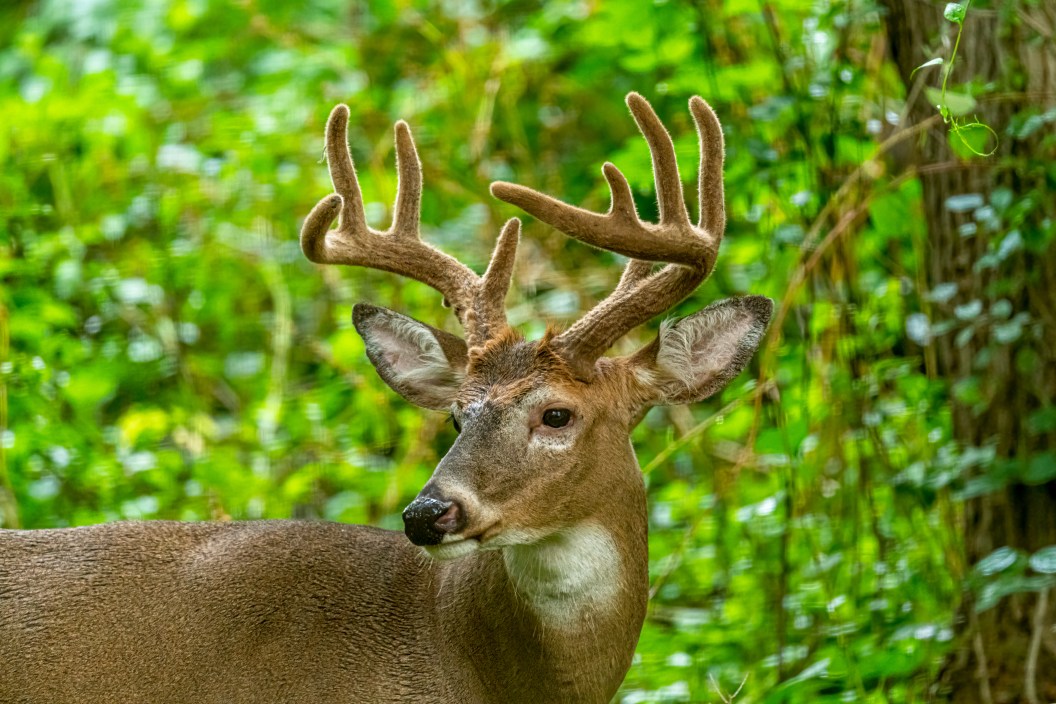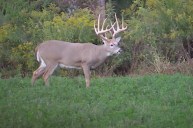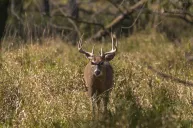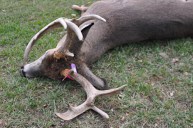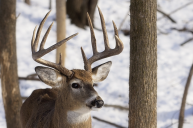According to the state's Department of Natural Resources (DNR), Michigan has more acres of public land than any other state east of the Mississippi, much of it in the Upper Peninsula and relatively remote. This, plus a relatively consistent, healthy deer population, makes Michigan a top destination for whitetail hunting. While a severe winter in 2022 and 2023 slightly increased adult and fawn mortality, the overall deer population is still robust in most areas, and the whitetail season dates have barely changed over the last 30 years.
One thing that has changed over the years is the state's deer combo license. While most of Michigan's deer hunting regulations are straightforward, the combo license is not. In fact, as a lifelong Michigan resident and deer hunter, I sometimes wonder whether the Michigan DNR is trying to make it as complicated as possible.
To mitigate confusion, allow me to break the Michigan combo license down into easy-to-understand sections. If you're a new residents or out-of-state hunter, you'll know exactly what you're getting with a deer combo license, and can get straight to deer hunting in a great state.
What is the Michigan Deer Combo License?
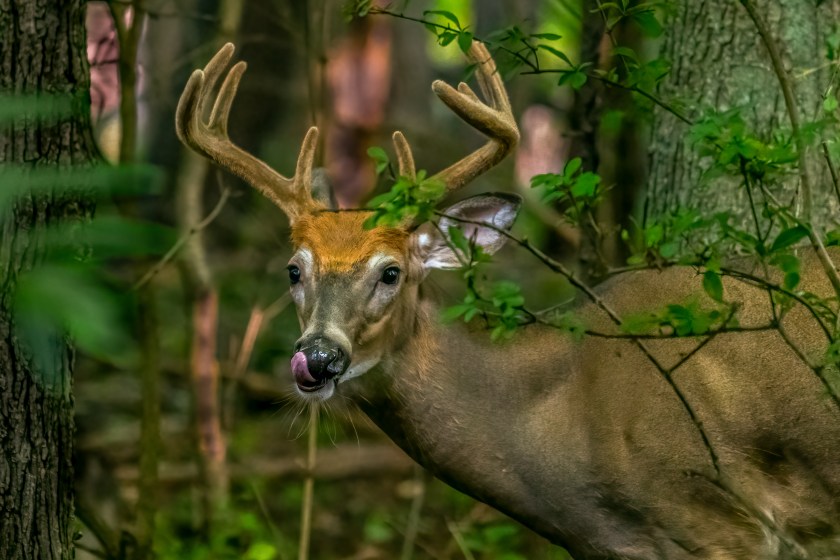
Getty Images, Kirk Hewlett
Simply put, a combo license provides the holder with two deer licenses and is the only way hunters can legally harvest two antlered deer in a single hunting season. The combo license gives residents and nonresidents two kill tags, which can be used to harvest some combination of an antlered deer, an antlerless deer in the Lower Peninsula, or an antlerless deer during archery season in certain Upper Peninsula deer management units (DMUs). Hunters can only buy one deer combo license each year, and it can be used on public or private lands.
Things start to get a little confusing when you start diving into antler point restrictions (APRs) on harvested deer, and the regular tag and restricted tag. The Michigan Department of Natural Resources has been experimenting with using APRs as a tool to protect an age class of bucks from being harvested so that they can move up to the next age class. The DNR protects these bucks by implementing regulations that allow the harvest of bucks only with a certain number of antler points on a side. For most of Michigan, the regular tag is legal for any deer that has at least one antler that is at least three inches long, whereas the restricted tag could restrict you to harvesting deer with a certain number of points.
How Regulations Vary
Different Deer Management Units (DMUs) have different antler point retrictions, so you'll have to make sure to look up whatever DMU you're planning on hunting in and thoroughly read the Michigan hunting regulations. This is mostly because the definition of a legal antlered deer varies between different counties and deer management units. Several counties in the northwest part of the Lower Peninsula require a deer with at least three points over one inch in length on the regular tag. That means spikes are completely off-limits if you're going to deer hunt in those areas.
If you're hunting in an area with 3+ antler restrictions, like the counties in the northwest Lower Peninsula, the animal must have three points over an inch in length on one side. The deer combo restricted 4+ tag requires four points at least one inch on one side. Restricted tags are mostly found in the Lower Peninsula; the Upper Peninsula is a little different, and their restrictions haven't changed much from last year.
There are some areas of the state that have no antler point restrictions for both the regular and restricted tags. These are mostly chronic wasting disease (CWD) management zones. For instance, in the Upper Peninsula, parts of DMU 122, 255, and 056 are all part of a core CWD surveillance area, and you can shoot whatever you like on both tags. Note that these areas also have severe baiting restrictions.
The antler point restrictions also do not apply to youth hunting, at least up until age 17. If a hunter turns 17 during the course of the season, they must follow APR restrictions for the county they are hunting from that point onward.
Hunting Does with the Combination License
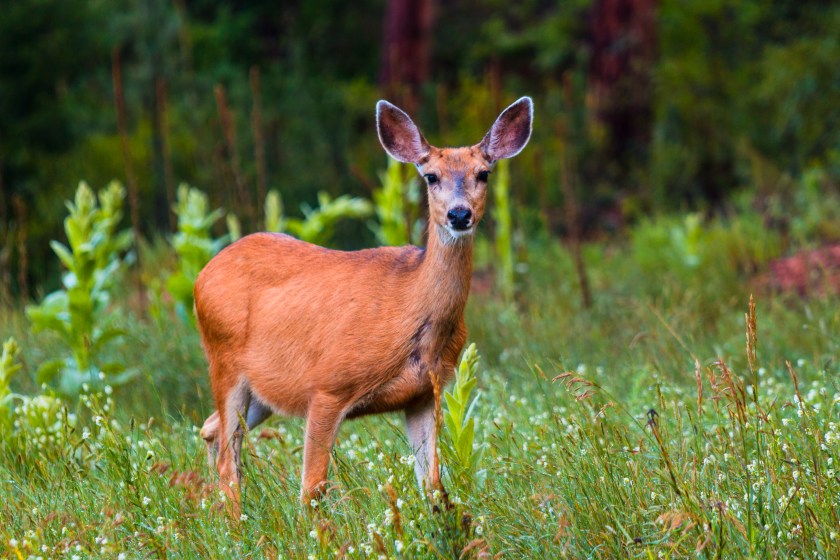
Getty Images, SWKrullImaging
Shooting a doe with a combination license is now allowed in Michigan. The DNR first permitted hunters to tag "a deer without antlers, or antlers extending less than 3 inches above the skull" on the combo license in the 2020 season. Prior to that, it was only legal to hunt antlered deer in the firearms seasons.
If you're hunting in the Lower Peninsula, you may harvest an antlerless deer using either kill tag. Technically, you could tag out completely on does if you so choose as long as you aren't in an area that restricts antlerless harvests. This applies to both public land and private land. However, if you use one of your tags on an antlerless deer, that's one fewer antlered deer you can shoot.
It's a different story in the Upper Peninsula. Hunters can only use the combination license for antlerless deer harvested during the archery seasons. If you want to take an antlerless deer using firearms or a muzzleloader, you'll need to use the new universal antlerless deer license. The Upper Peninsula also has many more restrictions on areas where antlerless deer can be harvested simply because the population is less thee than in the Lower Peninsula. Some DMUs are even draw-only areas, so make sure to check those regulations before heading out.
Your Questions, Answered
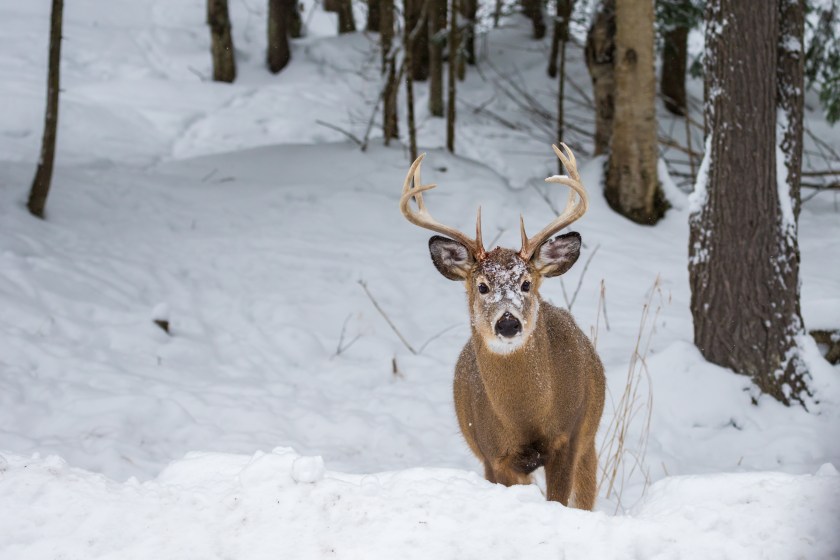
Getty Images, Dopeyden
In What Season(s) Can I Use a Michigan Deer Combo License?
The biggest benefit to purchasing the combination license is how versatile it is for hunting deer statewide. Buy one set of tags at the start of the year, and you're good to go all season. You may use it for archery deer, firearm deer, and for muzzleloader season. It doesn't matter if you use a crossbow, a rifle, or both.
If you're planning to do a lot of hunting in Michigan, the combination license makes much more sense than a single deer license, which is only good for the season you buy it for. Also, buying a single license means once you shoot an antlered deer, you're done for the season. It's something to keep in mind when you're shopping for licenses. You can also use the kill tags on the combination license in the early and late antlerless firearms seasons that take place in the Lower Peninsula.
How Much Does a Michigan Deer Combo License Cost?
Deer combo licenses are relatively inexpensive, given what you get for them. Residents will pay $40 for a combo license, with seniors 65 years or older paying $28. Nonresidents will pay $190 for their combo license. You'll also have to buy a base license (more below).
Do Michigan Deer Hunters Need a Base License, Too?
Yup. Michigan added a "base license" requirement a few years ago to generate additional funding for conservation work and habitat restoration. It also doubles as a small-game hunting license. If you're planning on participating in deer hunting season, whether you're a resident or a nonresident, you need to have this before you can buy any combo deer license.
The prices are $11 for residents, $5 for resident seniors aged 65 and over, and $151 for nonresidents. A junior license is only $6, and is available for children ages 10 to 16. For kids under 10 years old, there is no cost. Active duty military personnel can receive discounts, and disabled Michigan veterans can get licenses for free.
